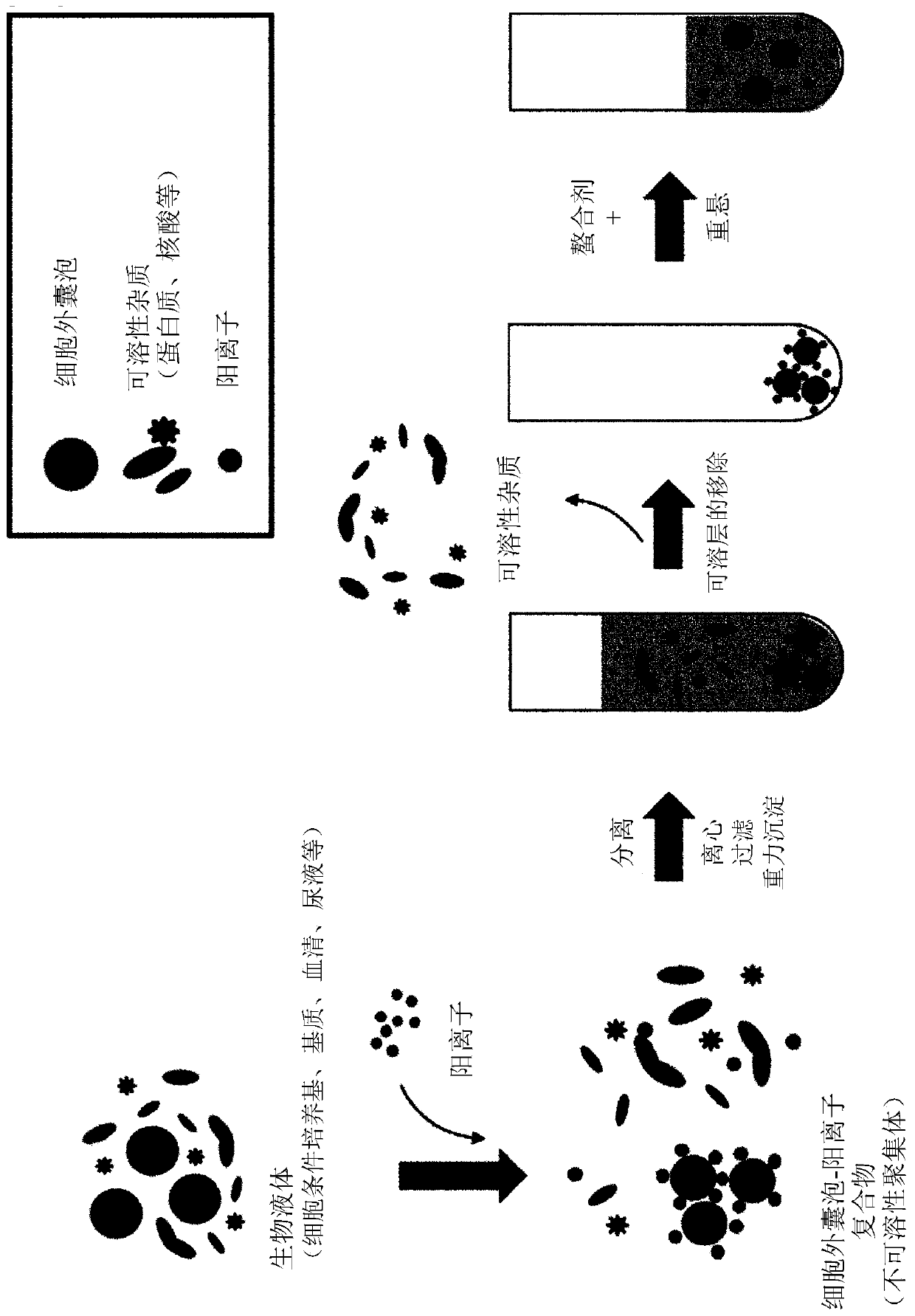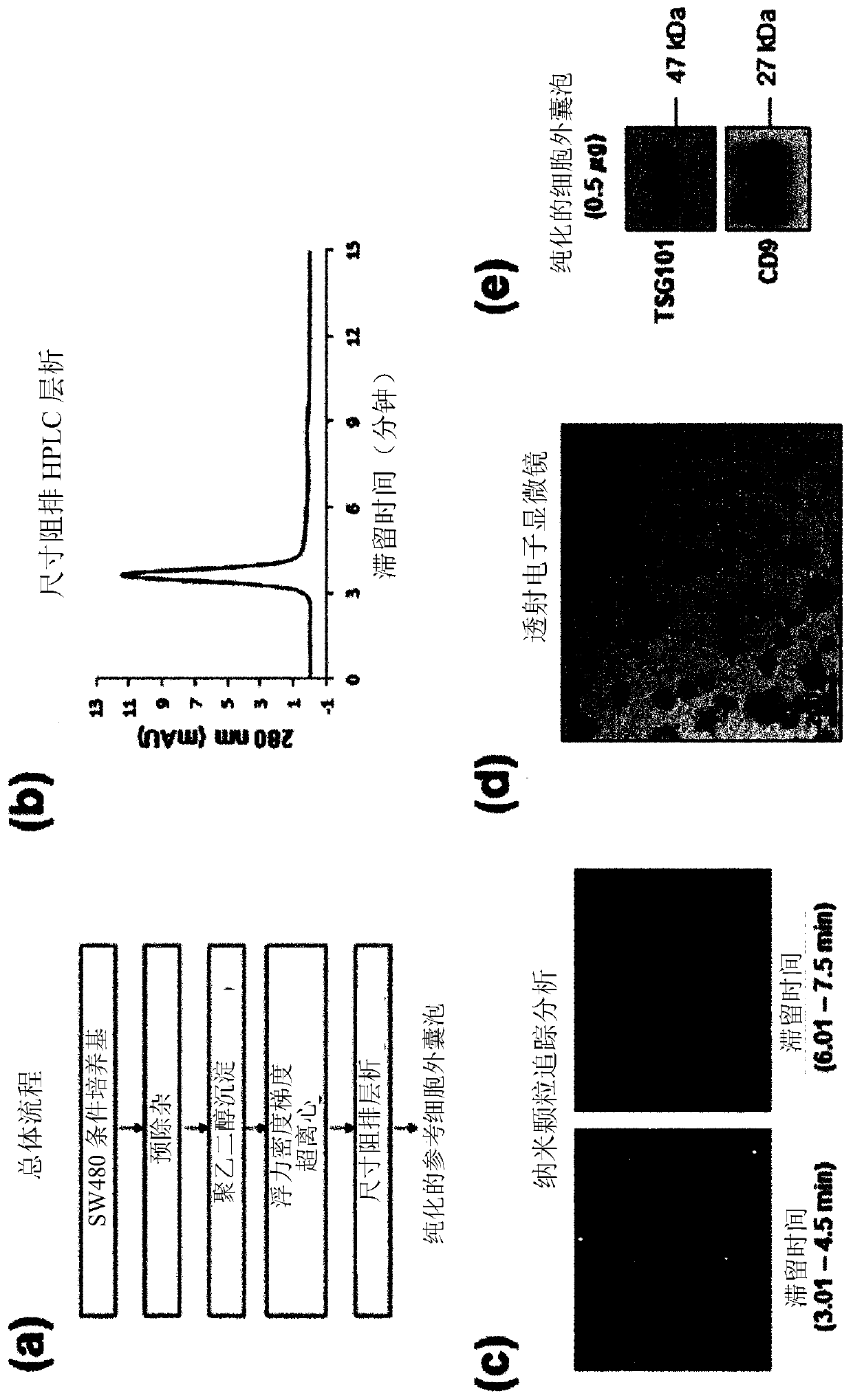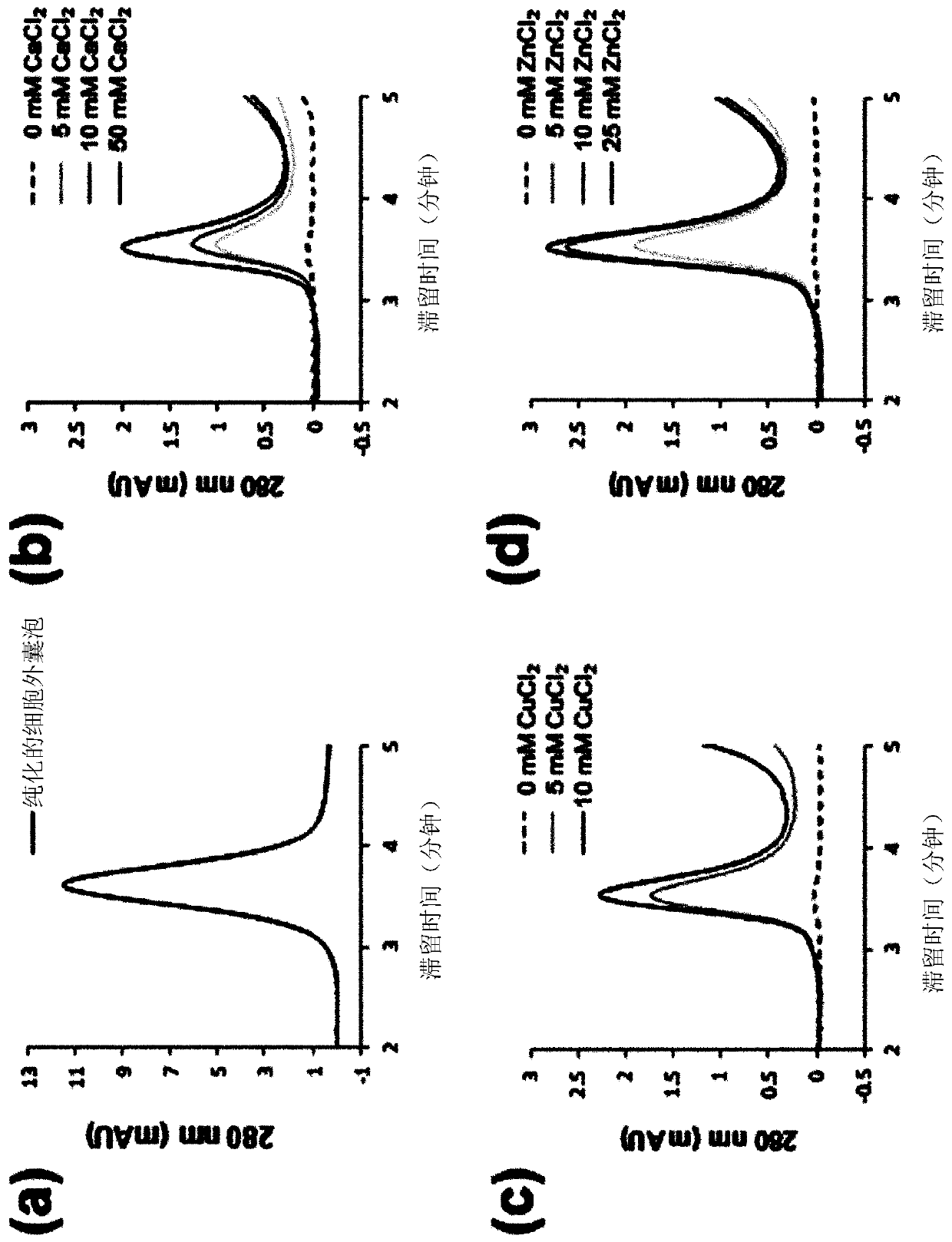Method for isolating extracellular vesicles using cations
A technology for separating cells and cations, which is applied in the field of separating extracellular vesicles by using cations, which can solve the problems of difficult and efficient development of antibodies and protein ligands, low efficiency, and high cost
- Summary
- Abstract
- Description
- Claims
- Application Information
AI Technical Summary
Problems solved by technology
Method used
Image
Examples
Embodiment 1
[0069] Example 1: Purification and Analysis of Sample Extracellular Vesicles
[0070] Colorectal cancer cell SW480 cultures were centrifuged at 500 x g for 10 min (total of two repetitions) to remove residual cells and pellets. The supernatant was centrifuged again at 2,000 xg for 20 minutes (totally repeated twice) to remove the precipitate.
[0071] For the preliminary purification and precipitation of extracellular vesicles present in the supernatant, extracellular vesicle precipitation induction solution (8.4% polyethylene glycol 6000, 250 mM NaCl, 20 mM HEPES, pH 7.4) was added to the supernatant, After 16 hours of storage in the refrigerator, the pelleted extracellular vesicles were collected by centrifugation at 12,000 xg for 30 minutes, and then dissolved in HEPES-buffered saline (20 mM HEPES, 150 mM NaCl, pH 7.4).
[0072] For the second purification of extracellular vesicles using density and buoyancy, the sample obtained in the previous step was mixed with Optiprep...
Embodiment 2
[0076] Example 2: Isolation of extracellular vesicles using several concentrations of different types of cations
[0077] Several concentrations of different types of cations (Ca 2+ 、Cu 2+ , Zn 2+ ), and centrifuged at 3,000×g for 10 minutes to collect the precipitate, which was then dissolved in HEPES buffered saline containing 50 mM EDTA. image 3 A shows the analysis results of extracellular vesicles separated by size exclusion chromatography using the HPLC system, and the extracellular vesicles in the sample were detected at 3.6 minutes.
[0078] Regarding the treatment concentrations of calcium, copper and zinc cations added to colorectal cancer cell cultures, it was confirmed that the 280 nm absorption band detected at 3.6 minutes increases proportionally with the concentration of cations, these results are as follows image 3 B to 3D as shown. The absorption bands of various types of cations and the absorption bands of sample EVs showed the same time of detection, a...
Embodiment 3
[0079] Example 3: Isolation of extracellular vesicles using copper cations (copper(II) chloride)
[0080] Add several concentrations of copper cations to colorectal cancer cell cultures, mix well and centrifuge at 3,000×g for 10 minutes to collect the precipitate, which is then dissolved in HEPES buffered saline containing 50 mM EDTA. Extracellular vesicles isolated by the method described above were studied by nanoparticle tracking analysis and Western blot analysis. Nanoparticle tracking analysis was carried out using NanosightLM10 instrument, and under the conditions of camera level 10 and detection limit 3, tracking and recording were carried out for 60 seconds. For western blot analysis, the signal of CD9, a universal extracellular vesicle label, was analyzed after SDS electrophoresis.
[0081] The result is as Figure 4 As shown in A, the production of extracellular vesicles increases with increasing copper cation concentration. Hence in Figure 4 In B, it is demonst...
PUM
 Login to View More
Login to View More Abstract
Description
Claims
Application Information
 Login to View More
Login to View More - R&D
- Intellectual Property
- Life Sciences
- Materials
- Tech Scout
- Unparalleled Data Quality
- Higher Quality Content
- 60% Fewer Hallucinations
Browse by: Latest US Patents, China's latest patents, Technical Efficacy Thesaurus, Application Domain, Technology Topic, Popular Technical Reports.
© 2025 PatSnap. All rights reserved.Legal|Privacy policy|Modern Slavery Act Transparency Statement|Sitemap|About US| Contact US: help@patsnap.com



